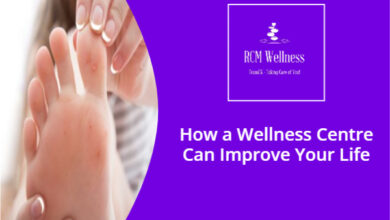
Muscle pain and tension are common issues that affect millions of people, whether due to stress, poor posture, repetitive movements, or athletic activity. One of the most effective therapies for addressing these issues is trigger point massage. This specialized massage technique focuses on releasing tight areas of muscle tissue, known as trigger points, that can cause pain and discomfort throughout the body.
Trigger point massage is a powerful tool for relieving pain and improving overall well-being, offering targeted relief for areas of the body that are most affected by stress and tension. In this blog, we’ll explore what trigger point massage is, how it works, its many benefits, and how you can find the best therapy near you.
Table of Contents
ToggleWhat is Trigger Point Massage?
The Trigger point massage is a therapeutic technique that focuses on identifying and releasing painful “knots” in muscles. These knots, or trigger points, are tight, sensitive areas of muscle that can cause pain both locally and in other parts of the body. Trigger points often develop in response to injury, overuse, stress, or prolonged tension.
Unlike general relaxation massages, trigger point therapy targets specific muscle groups and works to alleviate pain by directly addressing these trigger points. The massage therapist applies firm pressure to these areas to “release” the knots and relieve muscle tension. While trigger point massage can be intense and may cause some discomfort, it is highly effective for treating chronic pain and muscle tightness.
How Do Trigger Points Develop?
Trigger points can develop for several reasons, including:
- Injury or Trauma: Acute injuries, such as sprains or strains, can cause muscle fibers to become tight and knotted. When the body tries to protect the injured area, nearby muscles may also develop trigger points.
- Repetitive Movements: Repetitive actions, such as typing, playing sports, or manual labor, can overwork certain muscles, leading to the development of trigger points over time.
- Poor Posture: Bad posture, particularly when sitting or standing for long periods, can place stress on certain muscles. Over time, these muscles can develop trigger points as they work harder to support the body.
- Stress and Tension: Emotional stress can cause the muscles to tighten, especially in the shoulders, neck, and back. Chronic stress may lead to the formation of trigger points in these areas.
- Sedentary Lifestyle: Lack of movement or exercise can lead to muscle imbalances and weakness, which can contribute to the development of trigger points. Sitting for extended periods without proper movement or stretching can exacerbate this issue.
How Does Trigger Point Massage Work?
Trigger point massage works by identifying and releasing the tension in these painful knots. During a session, the massage therapist will use their hands, elbows, or fingers to apply direct pressure to the trigger points. This pressure may feel uncomfortable or even painful at first, but it is necessary to release the tightness in the muscle and allow it to relax.
The therapist may use various techniques, such as:
- Sustained Pressure: Applying firm, constant pressure to the trigger point to release tension.
- Stretching: Once the trigger point is released, the therapist may stretch the muscle to help restore flexibility and range of motion.
- Massage Strokes: Using massage strokes to improve circulation in the affected area and promote healing.
Trigger point therapy often involves communication between the therapist and the client. The therapist will ask for feedback on the intensity of the pressure and adjust their technique accordingly to ensure that the treatment is effective but not overly painful.
The Benefits of Trigger Point Massage
Trigger point massage offers a range of benefits for individuals experiencing muscle pain, tension, or discomfort. Some of the key advantages include:
1. Pain Relief
Trigger points are a common source of chronic pain, often causing discomfort in areas far from the actual knot. For example, a trigger point in the neck can cause headaches, while a trigger point in the back can cause pain in the legs or hips. By releasing these trigger points, massage therapy can significantly reduce pain and improve overall comfort.
2. Improved Range of Motion
Tight muscles and trigger points can limit flexibility and make it difficult to move freely. Trigger point therapy helps to release these tight areas, allowing for improved range of motion and flexibility. This is particularly beneficial for athletes, dancers, and anyone who engages in physical activities.
3. Increased Circulation
Trigger point massage improves blood flow to the affected areas, which helps deliver oxygen and nutrients to the muscles and tissues. Improved circulation can accelerate healing, reduce inflammation, and promote overall muscle health.
4. Stress Reduction
Chronic muscle tension and pain can contribute to emotional stress and anxiety. Trigger point therapy not only relieves physical discomfort but also promotes relaxation and mental well-being. Many people report feeling more relaxed and calm after a session.
5. Prevention of Future Injuries
By releasing tight muscles and improving flexibility, trigger point massage can help prevent future injuries. Tight muscles are more prone to strains, sprains, and tears, so keeping them relaxed and flexible can reduce the risk of injury.
Who Can Benefit from Trigger Point Massage?
Trigger point massage is suitable for a wide range of individuals, including:
- Athletes: Athletes often experience muscle tension and pain due to the physical demands of their sport. Trigger point massage can help them recover faster, prevent injuries, and maintain optimal performance.
- Office Workers: People who spend long hours sitting at a desk or using a computer may develop trigger points in their neck, shoulders, and back. Trigger point therapy can relieve the tension caused by poor posture and repetitive movements.
- Chronic Pain Sufferers: Individuals who suffer from chronic pain conditions such as fibromyalgia or myofascial pain syndrome may benefit from regular trigger point therapy to manage their symptoms and improve their quality of life.
- Anyone with Muscle Tension: Whether due to stress, poor posture, or physical activity, anyone who experiences muscle tension or discomfort can benefit from trigger point massage.
What to Expect During a Trigger Point Massage Session
During a trigger point massage, the therapist will first assess your body to identify areas of tension and trigger points. They will ask about your specific areas of discomfort and any previous injuries or health conditions that may affect the treatment.
The therapist will then apply focused pressure to the trigger points, using their hands, fingers, or elbows. You may experience some discomfort during the treatment, but it should feel like a “good” pain, meaning that it’s intense but not unbearable. The therapist will adjust the pressure based on your feedback.
After the session, you may feel some soreness in the treated areas, similar to the feeling after a workout. This is normal and should subside within a day or two. Drinking plenty of water after the massage can help flush out toxins released during the session and reduce soreness.
Conclusion: Finding Trigger Point Massage Near You
If you’re dealing with chronic muscle pain, tightness, or tension, trigger point massage could be the solution you need. It’s an effective, non-invasive way to relieve discomfort and improve your overall well-being. Whether you’re an athlete, office worker, or just someone looking for relief from everyday muscle pain, this specialized therapy can offer significant benefits.
To get started on your path to pain relief, consider finding a qualified massage therapist who specializes in trigger point therapy. Many massage homes and wellness centers offer this service, and a quick online search for “trigger point massage near me” can help you locate professionals in your area.
For expert care and a relaxing environment, contact our massage home today to schedule your session. Our experienced therapists are trained in trigger point therapy and can help you achieve lasting relief from muscle pain and tension. Don’t wait to start feeling better – book your appointment.





